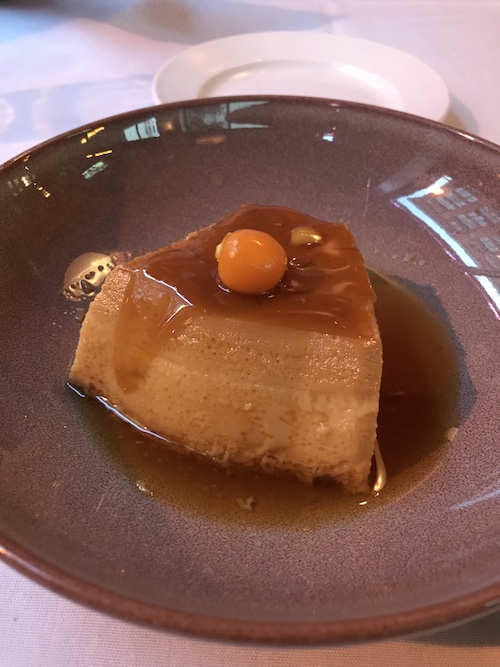Up until now, I've been content to defer to Libby O'Connell's research and expertise on each of the Bites. When it comes to crème caramel, however, the book's entry focuses on the introduction of French cuisine to standard American households via Julia Child's work, and O'Connnell's touching story of crème caramel's role in her own cooking and romantic background. That puts me in a strange position, which I'll get into in a moment. There's no denying that Julia Child had spectacular timing. Nobody can accuse 1950's America of having delectable gourmet cuisine. Child's Mastering the Art of French Cooking opened up a whole new world of elevated food to home cooks all over the country, and The French Chef TV show that followed brought it to an even wider audience. Households that were used to eating nothing but meat and potatoes could now experience the wonders of vichyssoise and potage.
We tend to forget that while Americans have been obsessed with nutrition since the very beginning, treating the act of cooking as an art to be refined and appreciated is relatively modern. The American palate has been getting ever more sophisticated (for food enthusiasts, anyway) since the '60s, and today, there is no shortage of culture aimed at those who appreciate the world of cuisine. Julia Child and the upswing of classical French cooking deserves a lot of credit for this. And like O'Connell, I adore Julia Child. But...
There isn't a word of the crème caramel that refers to anything but French food. No disrespect to its French origins, of course, but I can't help but think that in its current form, crème caramel has switched allegiances. I live in St. Louis, a town founded by Frenchmen and that retains a wealth of French influence in its culture and cuisine. I don't get crème caramel at the local French restaurants, though. I get it at Spanish restaurants. I get it at Mexican restaurants. I get it at Brazilian restaurants. And at all those places, it's not crème caramel at all; it's flan.
If the purpose of this Bite is to celebrate the fact that Americans have expanded access to elevated food, and in particular the deliciousness of this custard and caramel delight, I'm all for it, but we should include a hearty "Gracias" alongside the "Merci" that this book extends.
Read more »
We tend to forget that while Americans have been obsessed with nutrition since the very beginning, treating the act of cooking as an art to be refined and appreciated is relatively modern. The American palate has been getting ever more sophisticated (for food enthusiasts, anyway) since the '60s, and today, there is no shortage of culture aimed at those who appreciate the world of cuisine. Julia Child and the upswing of classical French cooking deserves a lot of credit for this. And like O'Connell, I adore Julia Child. But...
There isn't a word of the crème caramel that refers to anything but French food. No disrespect to its French origins, of course, but I can't help but think that in its current form, crème caramel has switched allegiances. I live in St. Louis, a town founded by Frenchmen and that retains a wealth of French influence in its culture and cuisine. I don't get crème caramel at the local French restaurants, though. I get it at Spanish restaurants. I get it at Mexican restaurants. I get it at Brazilian restaurants. And at all those places, it's not crème caramel at all; it's flan.
If the purpose of this Bite is to celebrate the fact that Americans have expanded access to elevated food, and in particular the deliciousness of this custard and caramel delight, I'm all for it, but we should include a hearty "Gracias" alongside the "Merci" that this book extends.

























